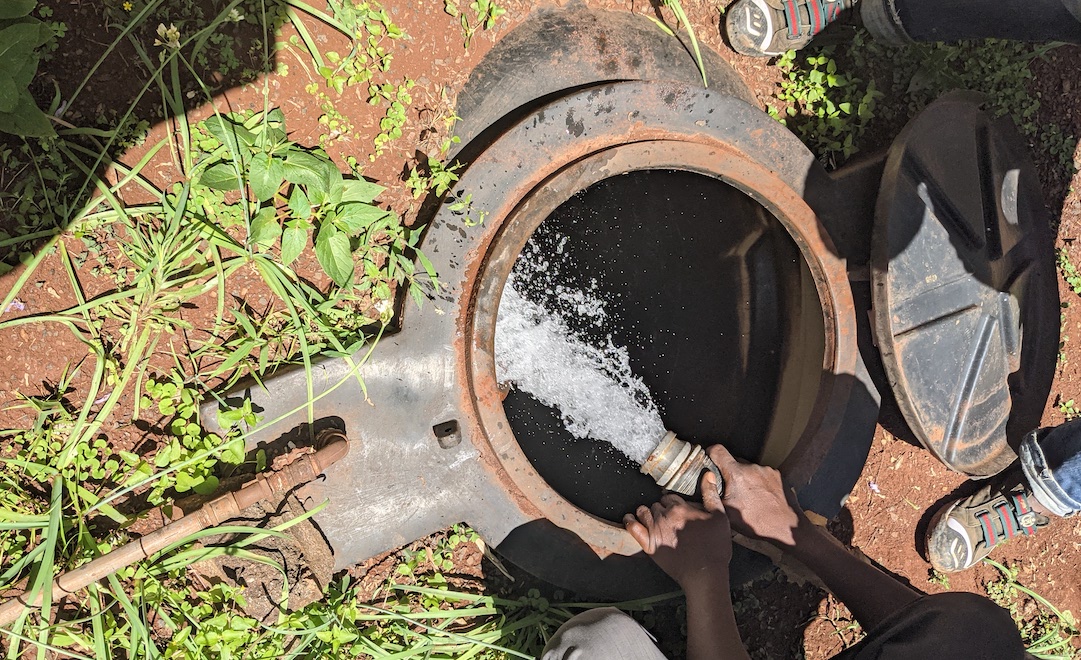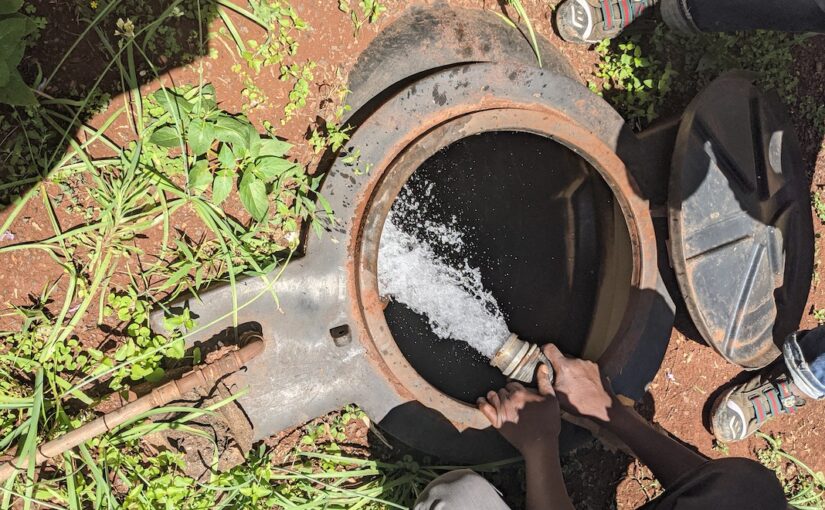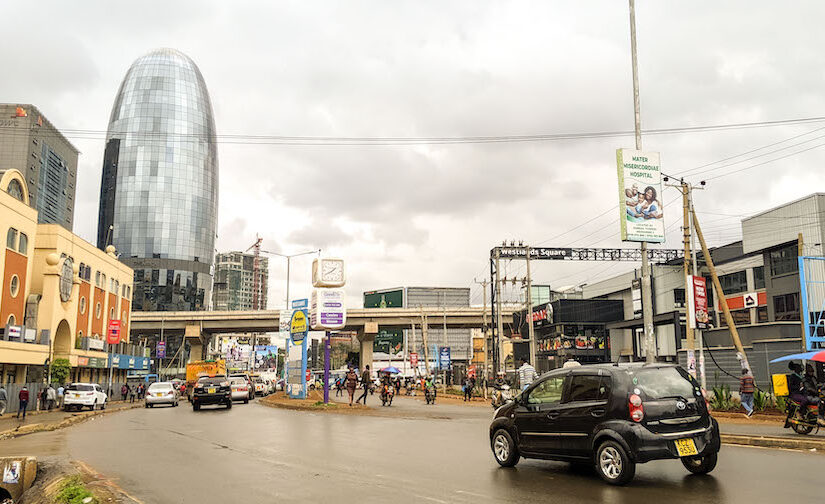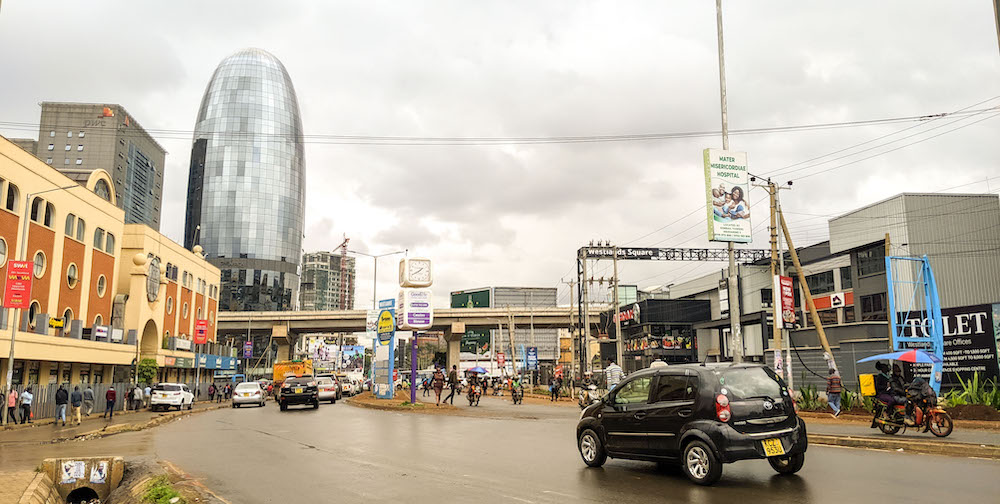
Trickling, humming, beeping: Infrastructural soundscapes and rhythms
- Moritz Kasper
- , September 5, 2022
- , 3:45 pm
The sound of water trickling – or more like dripping – from the utility pipes into the large plastic underground tank of our compound always triggered a feeling of relief. Even for me, who lived in the up-market area of Westlands, Nairobi’s erratic water supply system and its confusing schedules provided a weekly dose of concern and anxiety. Will water come this week? Will the tank make it through the coming days? When will the water actually return?
Lucky enough, I had an official piped connection by Nairobi Water and an additional over-ground tank. Many others in Nairobi rather rely on private water vendors, unofficial connections, and various other water supply modes. With a piped system that only covers two thirds of the city’s water demand, Nairobi’s water infrastructure consists of overlapping and sometimes contesting water access options, and a multiplicity of water practices, rhythms, and sounds. Overall, Nairobi’s infrastructural conditions – from roads and transport systems to everyday mobile data use – are everything but equally distributed. Each neighborhood, sometimes each block, has their own infrastructural realities with their own respective soundscapes and rhythms. For the most part, Nairobians across the city rely on myriad other humans, technologies, and practices to access the often-erratic supplies of water, electricity, transport, food, data, and many other necessities. How infrastructures work and how they are distributed reflects on the everyday activities of urban residents, and vice versa, which in turn further contributes to an infrastructural cacophony of sounds and rhythms. Blending out the overwhelming noise of cars and matatus, the hammering sounds of massive constructions, and the blasting of music from uncountable speakers, the subtle to not-so-subtle sounds of infrastructures provide accounts of the distinct multiplicities and inequalities of Nairobi.
At water points and water kiosks across Nairobi, one can listen to many infrastructural accounts and sounds. Especially in under-served areas, residents purchase and fetch water at public points or taps. Largely in the mornings, and mostly women and children, they queue there, they chat or play while waiting, they gossip and argue etc. You can listen to all of this until their hollow, reverberating plastic mitungi are filled with rushing and gurgling 20 liters of water. At home, the gobbling of re-filling other water containers and the dripping, flowing, and swooshing of basic water uses tell you about individual water security and privileges, or the lack thereof. In well-connected and well-off houses, the water often flows silently behind walls until it pitter-patters into solid sinks and showers. In homes without pipes, water is scooped and splashes into plastic buckets and on outdoor surfaces. In these various hydraulic audio expressions one can hear the infrastructural water realities of the city, of which some can be listened to on the streets also. For example, the loud engines of water delivery trucks may dominate street spaces in some residential areas, when water hasn’t come through the pipes as expected and where people are actually able to afford delivered water. And where the city features ghorofabuildings, the humming and screeching sounds of water pumps – that mostly transport water to rooftop tanks for later in-house distribution – tell you not only where residents might have direct taps in their apartments. It also reveals the water network’s incapability to provide appropriate pressure. All in all, from the chatter at water points to the mechanical sounds of trucks and pumps, when you listen closely to these sounds, you understand better the modes and rhythmicity of water distribution, access, and use.
Rooted in a colonial political economy and neo-liberal ideas of cost efficiency, Nairobi’s struggle to provide infrastructure in a regular and equal manner can be audio-experienced when it comes to electricity also. While most homes have some form of power connection, the city experiences roughly 90,000 small to large power interruptions per year. As much as those interruptions are black-outs, they are also sound-outs. Your TV stops, the speakers at bars and clubs go silent, water pumps stop humming, etc. Sometimes these events are preceded by a sudden rumbling, sparkling, hissing sound of a busting transformer nearby, or a tree branch that fell on a power line. Once you hear such a sound, you know chances are high that your place goes silent in the next seconds. For some places, the electric soundscape then becomes dominated by the rumbling of diesel generators that provide back-up supply for those who can afford it. As Brian Larkin has written for Nigeria, also in Nairobi ‘the constant drone of generators is a backdrop to everyday life – often bitterly resented, but reluctantly tolerated as an unalterable part of urban life.’ This audio backdrop is complemented by the beeping of so-called UPS battery systems in offices and many other digital-electronic sounds of uncountable devices, meters, and more in public and private spaces across the city. In comparison to water – for which its availability and presence is audibly distinct and diverse – it is the absence of electricity that produces distinct soundscapes of silences and back-up devices.
Listening closely to infrastructural soundscapes allows us to more deeply experience and understand the city as a space of heterogeneity, polyrhythmicity, and cacophony. Infrastructures and their spatial differentiations are not only a visible part of urban life in Nairobi and elsewhere but also audible – in their presences and absences, in their working conditions and breakdowns. The various sounds and their respective rhythms can help us to uncover persistent shortcomings and inequalities as well as the entanglements between different infrastructures. The humming of water pumps indicates the interconnected availabilities of water and electricity. The silence of black-outs may relate to the absence of Wifi. The rumbling of water trucks on streets tells us about place-specific water shortages. And, in the end, the sounds of infrastructures are connected to other sensorial and ambient experiences, like the vibrations and fumes of generators, and emotional reactions, like my own feelings of relief when I heard water trickling into my tank. There are many more open avenues for artistic, academic, and multi-sensorial investigations into urban infrastructures. Let us use all of our senses to follow those, by watching, smelling, tasting, feeling, and listening.
Moritz Kasper is a doctoral researcher at the International Planning Studies (IPS) research group (Department of Spatial Planning, Technical University Dortmund). He largely works on heterogeneous, socio-technical realities of the urban everyday, for example the practices and artefacts of domestic storage (water and electricity) in Nairobi. He is also a member of the “Urban Waterscapes and the Pandemic” research project and an associated member at the collaborative research center “Re-Figuration of Spaces” (CRC 1265). In the past, he has worked for Goethe-Institut Kenya, HafenCity Hamburg GmbH, Samuel Hall, and others in research, design, cultural events, public relations, and editing in Germany, Kenya, Nigeria, Zambia, and Tanzania.
© 2020 SOUND OF NAIROBI






